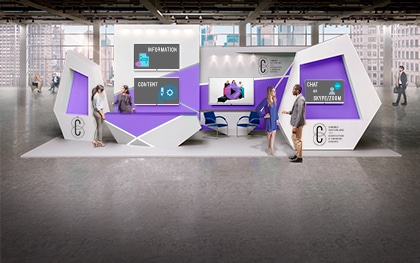Why The Attendee Experience Matters In Conference Planning
Engagement is one of the key themes in the digital era and is equally important in the conference management and event planning industries. If a conference cannot generate engagement, it will impact the attendees‘ ability to retain information. The human attention span is notoriously short, and if meeting planning does not account for this, we can quickly fall into information overload.
Moreover, the digital era is underpinned by a culture of participation where content is generated by audiences as well as for audiences. This is crucial to engagement and the overall quality of the attendee experience. This post looks at seven ways of boosting conference planning and delivering an engaging conference experience.
Related: Embracing the Conference Experience: Engagement and Emotion
Seven Principles To Increase Conference Attendee Engagement
1. Design to avoid overload. Don’t let your meeting planning efforts go to waste and organise the programme so that there is a gap between “heavy” sessions. Keynotes are often scheduled towards the end of the event, but regarding information processing, it would be better to plan them early in the day, when the audience is likely to be more receptive. This is most effective if the event lasts several days.
2. Get creative with breaks. The general understanding in event planning industry is that breaks equal time off, when in fact they can and need to be planned to increase conference attendee engagement. Breaks are not an interruption, but a continuation of the event’s overall mission. Don’t be afraid to get creative and consider including team-building activities in small groups, short walks or bike rides, short meditation sessions, encourage attendees to write on a “gratitude wall”, etc.
3. Design for participation. Traditionally, participation is only a job for committees, speakers, or the conference management team, but to increase conference attendee engagement it needs to be extended to the audience. To do this, use live polls, surveys, and gather feedback before, during, and after the conference using social media and event apps.
Related: Unlocking The Value Of Interaction At Conferences
4. Design for interaction. Conferences have a somewhat impersonal nature as they draw hundreds or even thousands of attendees. You can counter this by including peer-to-peer learning activities in small groups, or digital Q&A sessions with speakers. It’s also vital to create a sense of community before and after the event. Online communities can be easily formed via social media platforms or by using event technology, like event apps.
5. Design for co-creation. Events should be planned around creating opportunities for expression. An interactive programme is the first step, but you should also give attendees freedom to co-create. For example, provide a well-researched conference hashtag and let them generate unique content, then curate it, so attendees contributions are displayed at the end of the meeting. And remember that the conference hashtag can also help sustain engagement after the conference.
6. Design for achievement. Designing for achievement is one of the principles of learning and has been applied to gamification, both of which are relevant to event planning. The goal should be ensuring that attendees go home feeling that their attendance was useful and valuable. To do that, include some form of problem-solving in group activities, or rethink the material so it focuses on offering solutions to problems attendees face in their professional lives.
7. Design for alignment, then engagement will follow. Information designer Jorge Arango offers an exciting solution to the endless search for engagement by saying engagement is not an end in itself, but the result of what he calls “an alignment strategy”. To create this strategy, ask yourself “What are the attendees’ professional goals?”, “What are the organiser’s goals or mission?”, “How is all this relevant to my industry sector?”. Taking it even further, ask yourself how to align the event’s mission with society’s goals.
Related: Quick Guide to Creating Engaging Conference Learning Experiences
Conclusion
Conference engagement is a challenge but is not impossible. Using the right event technology tools, implementing feedback strategies like live polls, reconciling goals and expectations, and staying authentic should be top priorities. Admittedly, this is a learning process that takes time and effort. If you want to increase conference attendee engagement and craft a conference experience that captivates the audience, why not get in touch with a meeting planning expert?
——
Congrex Switzerland is an internationally operating agency delivering customised solutions. This encompasses the overall organisation of conferences and meetings including the management of hotel rooms and the strategic consultancy. Annually Congrex Switzerland organises approximately 45 events with over 73’000 delegates. Amongst our clients are international associations, governmental organisations and corporations.
If you wish to receive additional information about Congrex Switzerland, please feel free to contact us.




